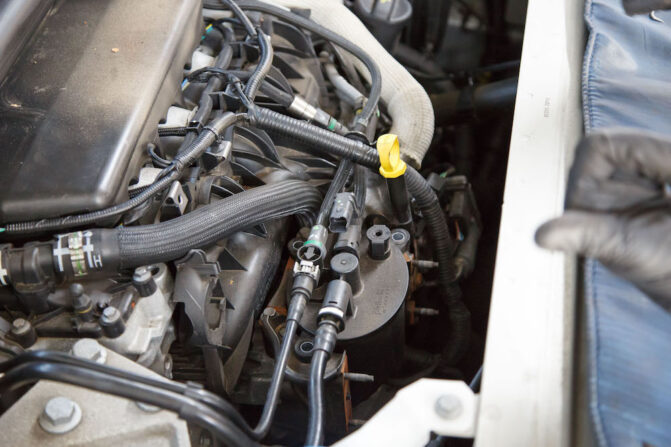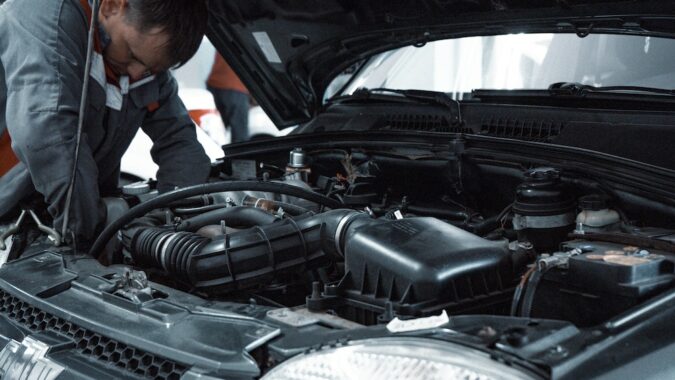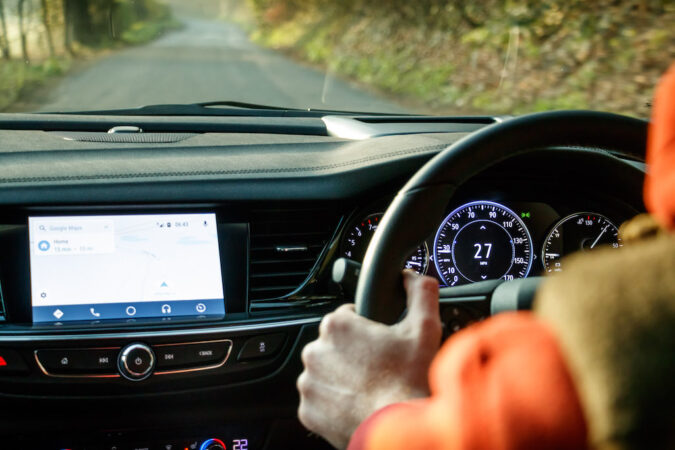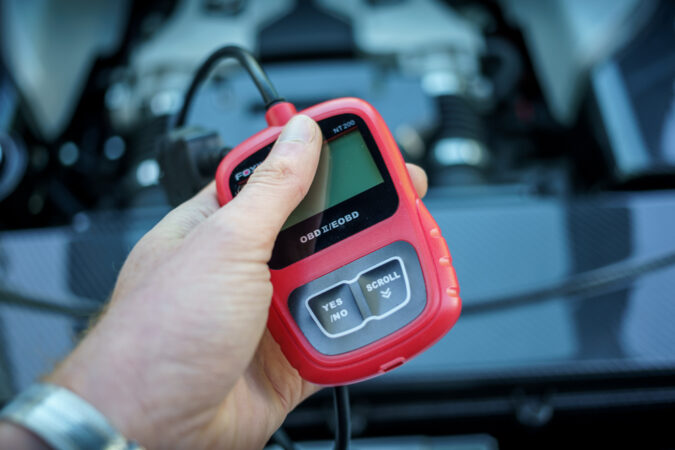What are the best ways to know something is wrong with your vehicle? The engine sputters, there is a groaning noise coming from inside, there is a foul smell after starting the car, and so on. One of them can be a sign that lets you know it is time for a visit to the mechanic. Also, you can look out for the engine check light. The Malfunction Indicator Lamp or MIL is the other name for an engine check light. This light flashes whenever there is an issue with a vehicle. Is your DTC showing P0335?
The flashing light lets you know what the issue is. You can understand more about the issue itself by looking for the DTC. Diagnostic Trouble Code or DTC is a code that is used for identifying any issue within a vehicle or any heavy equipment. The engine check light alerts the driver that there is an issue with the vehicle.
The DTC code is used to identify what the issue is and where it is originating from. A DTC code P0335 is typically for when there is some malfunction with the crankshaft position sensor A. The code can be shown for some other reason. But, since this is the most likely case, let us explore more on this issue and how to diagnose it.
Code P0335: What Does P0335 Mean?
P0335 is a Diagnostic Trouble Code (DTC) for crankshaft position sensor A malfunction. This code indicates that the electronic control module of the vehicle is unable to identify the crankshaft position sensor. This is a generic powertrain code, meaning it refers to all cars equipped with OBD-II (onboard diagnostics). Even though the repair processes are generic, they can differ based on the brand or model of the vehicle.
Crankshaft Position Sensor or the CKP sensor usually informs the car’s software about the engine’s speed. This information is used by the ECM or Engine Control Module to determine when to inject fuel and when to spark the air-fuel combination. The CKP sensor combines with a reluctor ring mounted to the crankshaft. It informs the ECM about the crankshaft’s location at any given moment.
The ring shifts in front of the sensor, producing a square wave voltage indication that the ECM interprets as the crankshaft position. When the ECM does not detect crankshaft pulses or detects an issue with the pulses in the output with Sensor “A,” trouble code P0335 is triggered.
Code P0335: Common Symptoms Of P0335 DTC Code
Aside from the DTC code flashing in your check light, you can experience some unusual occurrences in your vehicle that will let you know it is a P0335 code. Some cars will not even start, whereas others run badly and show a decrease in engine power and torque. Several drivers might experience a forceful idle and stuttering. The signs are usually dictated by the fundamental cause of the situation, although this is not a universal rule.
The ECM will be unable to perform these modifications if the crankshaft position sensor is malfunctioning, leading to sluggish acceleration. A defective crankshaft position sensor also causes poor spark timing, which can result in a variety of issues, notably the misfiring of one or more engine cylinders. This will be felt or heard as a slight hiccup in the engine.
If exclusively used for identifying misfires, the MIL may flash. However, the automobile would have to go through numerous stages until the MIL glows. However, if your vehicle employs the crank sensor to check for misfires and spark timing, the car may not start. As a result, the most common P0335 code symptoms are a misfire, MIL lighting, or a refusal to start.
Code P0335: What Causes The Code P0335?
As soon as you discover the code P0335, your priority is to pinpoint the issue with the vehicle. Most of the time, the reason for a code P0335 is damaged crankshaft position sensor A. There can be some other reason for your vehicle to flash this code, but the crankshaft position sensor malfunction is the most likely. Some other common causes for the P0335 DTC code are:
- The damaged crankshaft position sensor
- Faulty electrical connections
- Wiring harness connectors not attached properly
- Damaged signal plate
- Busted timing belt or chain
- Issues with the crankshaft sensor wiring
- Reluctor ring damage
- Problems with the engine control unit
Code P0335: How Does A Crankshaft Position Sensor Work?
The crankshaft position sensor monitors the engine crankshaft’s rotational speed (RPMs) and exact location. The engine will not start without a crankshaft position sensor. Numerous crankshaft position sensors are Hall Effect sensors, which are a form of electrical sensor. When a Hall Effect sensor is subjected to a magnetic field, it generates electricity. A toothed wheel rotating with the crankshaft interrupts the magnetic field of a crankshaft position sensor.
This results in a sequence of on and off switches in the Hall Sensor, which the ECU (Engine Control Unit) interprets as crankshaft speed. The faster the sensor cycles on and off, the faster the crankshaft spins.
The component that disturbs the magnetic field is usually a metal disk or ring with a specific hole pattern put on the crankshaft’s base. The hole pattern is apparent in the crankshaft sensor data when the crankshaft spins. The frequency of the signal is determined by the number of holes in the disk and the rotational speed of the crankshaft.
The PCM (powertrain control module) is a strong computer that regulates and controls the ignition system of the engine. It can also monitor the fuel injection, emission components, rotating unit, gearbox, and exhaust system alignment. This also includes functions actively connected to the engine and gearbox, and it can even control the anti-lock brake system. It takes the input from the crankshaft position sensor to decide when and which cylinder to spark.
The input from the crankshaft position is also implemented to identify misfires in any of the cylinders. If the sensor signal is not present, there may be no spark, and the fuel injectors will not work.
(Watch this video on how the crankshaft sensor works!)
Code P0335: Where Is The Crankshaft Position Sensor Located?
The placement of the crankshaft position sensor varies from car to car. As it should be near to the crankshaft, it is usually found on the front bottom of the engine. It is commonly found attached to the timing cover.
It can sometimes be positioned towards the back or side of the engine. To control the speed of the crankshaft, the crankshaft position sensor often detects the speed of the clutch flywheel. In some circumstances, the sensor is attached to the transmission’s bell housing.
Code P0335: Signs Of A Failing Crankshaft Position Sensor
A check engine light on the dashboard is the most obvious sign of a malfunctioning crankshaft position sensor. You may also notice a stalled engine or poor engine performance. You may also experience engine tremors or misfires in odd situations.
Whereas these are the most notable indications, they aren’t the only ones that might lead to a damaged crankshaft position sensor. To assist you in assessing the car, we’ll look more closely at some of the most typical signs of a faulty crankshaft position sensor below.
1. Check Engine Light
The check engine light can flash for a lot of situations. One of these causes is a faulty crankshaft position sensor. If the engine control unit does not get a suitable signal from the sensor, the unit can believe something is amiss and will immediately flash the check engine light on your car dashboard. When using an OBD2 scanner to look for error codes, you may come across crankshaft position sensor-related codes like P0335.
2. Problems With Starting The Vehicle
The most apparent sign of a damaged or failed crankshaft position sensor is difficulties starting the car. Engine problems are not uncommon, no matter which brand or model car you own. The crankshaft sensor plays a major part in maintaining the engine.
The crankshaft position sensor measures the position and speed of the crankshaft, as well as other information that is vital while starting an engine. If the crankshaft position sensor fails, the car might start intermittently or not at all.
3. Engine Stalling
The crankshaft position sensor is made up of many wires that connect to the engine control module and the crankshaft. If any of these cables end up being broken or burn out, the engine control unit will fail to receive the sensor’s data signal. If you continue driving with a damaged wire or something, your engine will probably stall. It can sometimes stall regularly, whereas other times, it might stall at random points.
It can be quite annoying to have the car engine stall, especially when you have to be somewhere quickly. You should also inspect the sensor to ensure it is in good working order.
4. Less Gas Mileage
Fuel injection would not work as effectively as it should if timing information is not provided. As a result, the engine will consume more fuel than normal. You would have to refill your fuel tank more often, which would lead to your wallet getting lighter. Inspect the sensor with a professional since poor fuel efficiency might be caused by a lot of factors.
5. Irregular Acceleration
The engine control unit is unable to adapt spark timing and fuel injection when engine speed climbs due to incorrect data from the crankshaft position sensor. Slow or irregular acceleration can be caused by a lack of precision and make maintaining a consistent pace difficult.
6. Engine Misfire
If the engine starts to vibrate dramatically, it might be due to a cylinder misfire. This problem can potentially be caused by a malfunctioning position sensor on the crankshaft. The sensor is perhaps giving you inaccurate information regarding the location of the pistons. This problem might also be caused by timing issues with the spark plugs, so get that examined as well. If the spark plugs are not the issue, the crank position sensor most definitely is.
7. Poor Engine Performance
The engine control unit of your car will not know the right position of the crankshaft or cylinders if you have a faulty crankshaft position sensor. This can create a lag in the control unit’s capacity to maintain the engine’s functioning and performance.
You might experience moments of hesitancy every time you press on the throttle pedal somewhat harder during this wait. It will sometimes not reply at all. This may be extremely dangerous on a route where you must drive quickly and without delay.
Code P0335: Testing A Crankshaft Position Sensor
Engine misfires, engine stalling, and difficulty starting are all telltale signs of a defective crankshaft position sensor. If you’re having any of these issues, your crankshaft position sensor might have to be replaced. But, any of these problems can be caused by other issues. So, before trying to diagnose a malfunctioning crankshaft position sensor, you might have to run some tests.
You may test for voltage output using a CKP (crankshaft position sensor) and compare the findings to the manufacturer’s requirements. Back probe the wires at the sensor connection if the voltmeter comes with needle probes. If this is not practical, disconnect the sensor electrical connector and link the two halves through a test connector. Then reconnect the wire.
Set your digital multimeter to the AC millivolt range and have someone rev the engine. A common sensor will have an output voltage greater than 200 mV. Nonetheless, you should compare the findings to the standards given in your car’s user manual.
Code P0335: Replacing A Crankshaft Position Sensor
If the vehicle computer has already activated the engine light, you can use a code reader to get the DTC code. If you don’t have a code reader, most mechanics or workshops will recover DTC for the car free of charge. Once you get the DTC P0335, you can proceed with the diagnosis.
A professional might charge a lot of money to replace or repair a crankshaft position sensor. The actual cost of both materials and labor might vary substantially depending on the make and model of your car. It can also vary depending on the workshop you take your car to. The cost of the crank sensor and the work required to replace it will differ, and certain crank sensors cannot be changed outside of the dealership since specific instruments are required to program them.
(Watch this video to see how to test the crankshaft position sensor!)
Code P0335: Crankshaft Position Sensor Replacement Cost
The cost of replacing the crankshaft position sensor in your car can vary depending on the make, style, and placement of the sensor. Some sensors are visible, but others may be buried beneath the starter or in a difficult-to-reach location, such as the top of the transmission bell box.
The average cost of replacing a crankshaft position sensor can range somewhere from $120 to $300. The cost can increase drastically if you have a higher-end or an exclusively modified car. If you have enough experience and the equipment needed to replace a crankshaft position sensor, get into it right away.
Aside from the type and model of your car, the overall cost of a crankshaft sensor replacement job is greatly influenced by who performs the work. Your safest bet is to look into a few local car maintenance shops and acquire replacement cost quotations. Although your nearest dealership will gladly repair a simple item like a crankshaft sensor, you should be prepared to pay the premium. If you take your car to a fancy workshop, the labor cost can surpass the actual cost of the crankshaft sensor replacement.
Is It Safe To Drive With A Faulty Crankshaft Position Sensor?
If you’re wondering whether it’s safe to start the car when the crankshaft fails, the answer is probably yes. But that is only when the issue is just acting up. If the issue has been evident for quite some time, then it is better not to drive the car until you get it checked by a professional. You should at least do some diagnosis yourself at the initial stage, considering you know the basics of your car.
Once you turn the ignition, you will most probably notice the check engine light flashing. That is the first symptom to look out for. If you notice any of the above-mentioned symptoms multiple times, then it is safe to bet that your car has a faulty crankshaft position sensor. It is safe to drive a vehicle after experiencing a couple of engine misfires or inconsistent acceleration. But it is still a little risky to continue driving with that car on the highway.
You might end up with uneven acceleration in the middle of the road, which can lead to you losing control of the car momentarily. If you are driving on a crowded or busy highway, that can be very risky. Also, continuing to drive your car in that state can lead to significant engine damage. It can cost you a fortune to get your engine repaired or, as a last resort, replaced.
Other Possible Reasons For A P0335 Code
Now, let’s look at some of the possible reasons for a P0335 code that you can come across.
1. Issues With The Timing Belt
A damaged timing belt can also set off symptoms such as a misfiring engine. This problem with your vehicle can also flash error code P0335.
2. Timing Chain Damage
Damage in the timing chain can cause code P0335. The timing chain can stretch with time, allowing it to skip a gear on the crankshaft and lead the engine’s timing to slip out of sync. You can experience engine misfiring or uneven acceleration.
3. Circuit Problems
Any problem with the wiring or the circuit(s) can cause a P0335 error code.
4. Reluctor Ring
The reluctor ring contains a variety of teeth and is responsible for giving the PCM a point of reference for the crankshaft position. If the ring is damaged in any way, the P0335 code can be activated.
How Serious Is A P0335 Code?
A P0335 code indicates a significant mechanical or electrical malfunction. If the car isn’t starting or has any engine performance concerns, avoid driving the car until you can take it to a mechanic. Some users report that their car may start once, stutter, and then refuse to start once more.
Furthermore, the engine can operate badly for some time before failing to restart. Take the troubleshooting steps to determine the underlying problem, or take the car to a workshop to ensure there isn’t a technical problem that might severely harm the engine and gearbox.
Once you discover a P0335 error code, do not ignore it. It is better to get your car diagnosed as soon as possible. If the damage gets too severe, you might end up paying a fortune at the workshop just to get your car accelerating properly again.
Diagnosing A P0335 Code
A professional will start by scanning the PCM with a scan tool to look for any codes. There may be current, past, and pending codes discovered, and all must be examined in conjunction with the freeze frame data. The codes are then cleared, and a road test will be undertaken to attempt to replicate the symptoms. Following that, the crankshaft position sensor and its wiring would be visually inspected. Your mechanic will examine the CKP 5 Volt square wave pattern if there is no obvious damage.
You need to have scope access. If you don’t, see the maintenance manual and acquire a resistance measurement from the crank sensor. As there are so many distinct types of crankshaft sensors, it is impossible to provide all of the proper resistance readings for each crankshaft in one section.
The crankshaft is an important engine component. While the OBD-II scanner error code P0335 issue does include the crankshaft, the code is more concerned with the electrical parts and modules than with the crank itself. As a result, using a scan tool to visually check the parts is a good step. But if the problem is not quickly noticeable, contact an expert technician who has a scoping tool.
Bottom Line
If you are fixing the wire or sensor, this is a simple fix that you can do yourself. Anything more than those fixes will need considerable time and expertise in fixing timing system components. If you notice a P0335 DTC code, you can take the initial measures to diagnose your car. But you should consult a mechanic as soon as possible. Ignoring the immediate error code can result in permanent engine damage.




